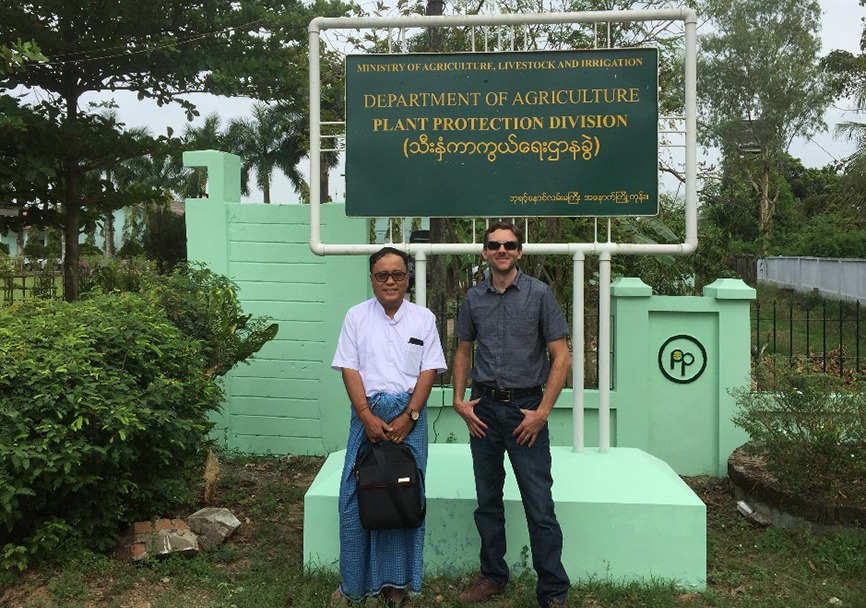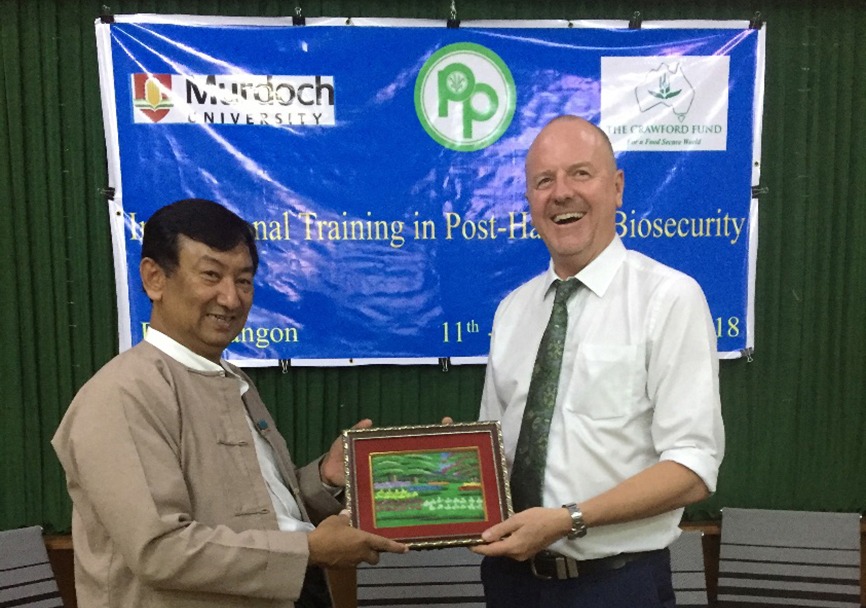

Postharvest Management Training in Myanmar
January 31, 2019
In December 2018, a four-day workshop was conducted in Myanmar with the support of the Crawford Fund WA committee. The training was delivered by Professor YongLin Ren and James Newman, both from Murdoch University, and Dr Ko Ko from the Department of Agriculture, Myanmar. The subject of the workshop was ‘Best practice management of postharvest pests and quality in storage’ and the training took place at the Department of Agriculture, Ministry of Agriculture, Livestock and Irrigation, Yangon.

Department of Agriculture, Myanmar, Yangon
The training comprised of 16 participants nominated by the Myanmar government as middle level management and senior field staff operating within central or state governments.
Workshop attendees were provided with an overview of the Australian grain handling, storage and export inspection system for grains, plants and plant products. This includes systems and measures applied in the supply chain to control stored product pests and achieve the nil tolerance for pests in Australian export grain.
Specific post-harvest technologies covered in the training program included fumigation technologies, use of controlled atmospheres, physical treatments and the importance of hygiene in the grain handling and storage system.
Pest management requires a sound underpinning regulatory framework and a very close working relationship is needed between producers, grain storage facilities, transport operators, exporters and regulators. Training has demonstrated that Australia’s agricultural production systems benefit significantly from a strong biosecurity system.
“All participants recognised that Australia is a world leader in postharvest pest and quality management supported with R&D. The number one commodity Myanmar imports from Australia is wheat. Therefore, the training will certainly benefit WA and all Australian grain industry,”
said Professor Ren.

gives gift to Jeff Turner, Senior Trade Commissioner and Counsellor, Australia
The training also discussed the most appropriate technologies that could be applied in the Myanmar grain production and handling system and identified suitable trial opportunities for the application and extension of treatments.




 0
0